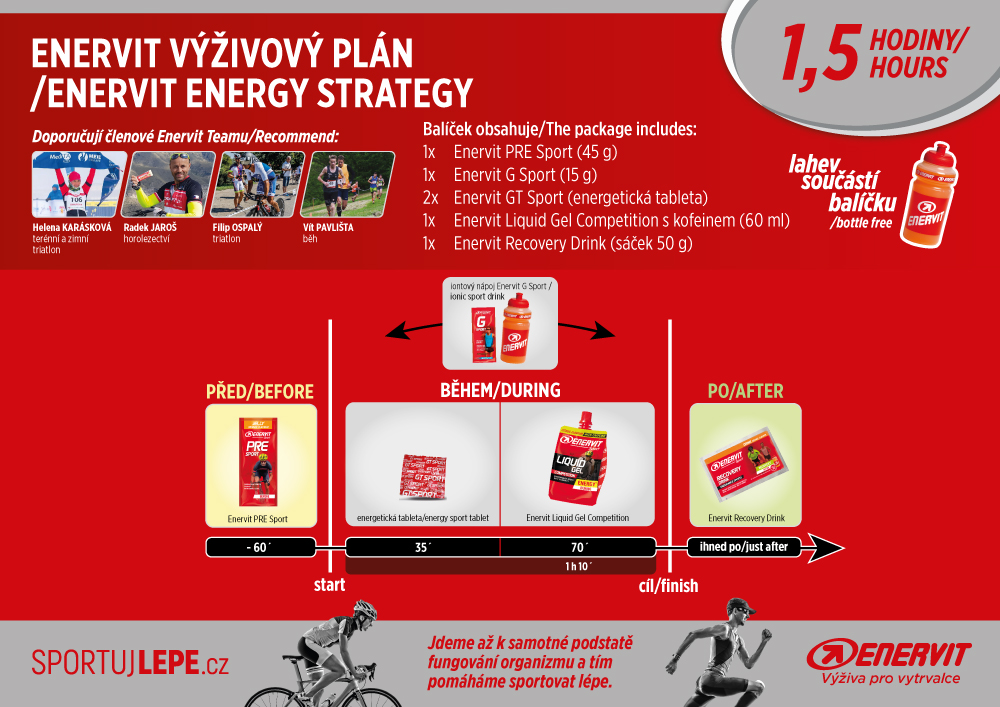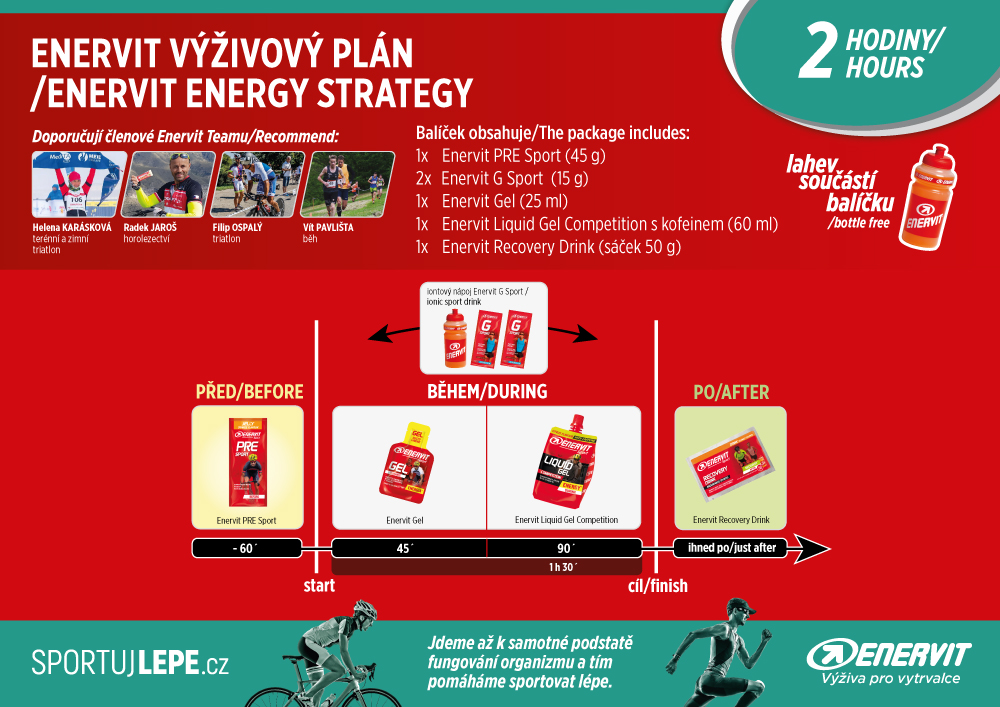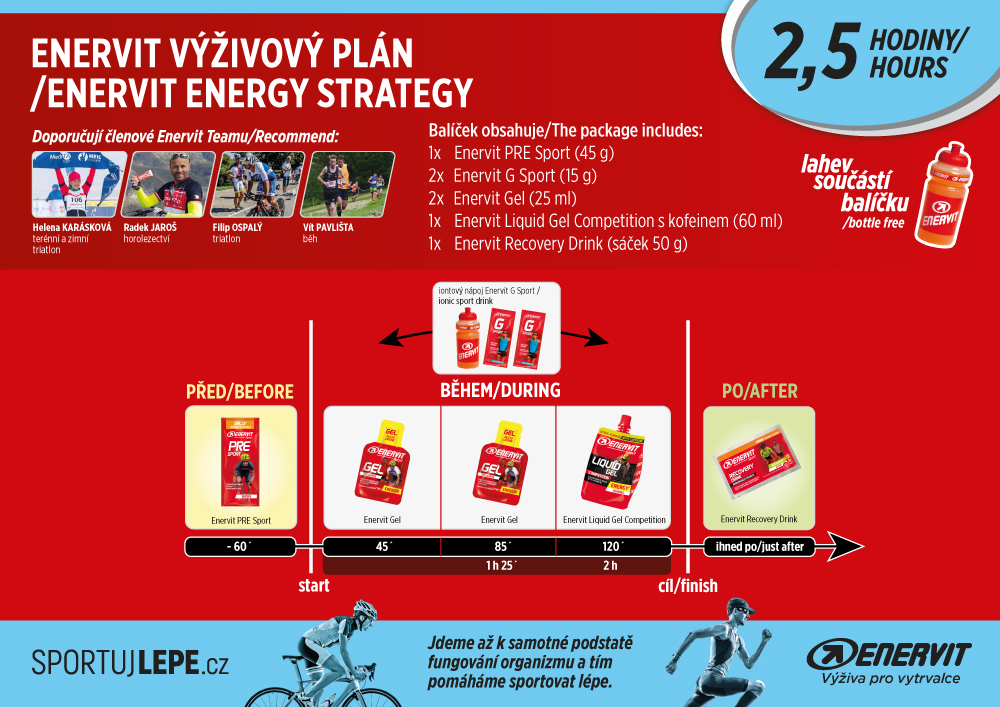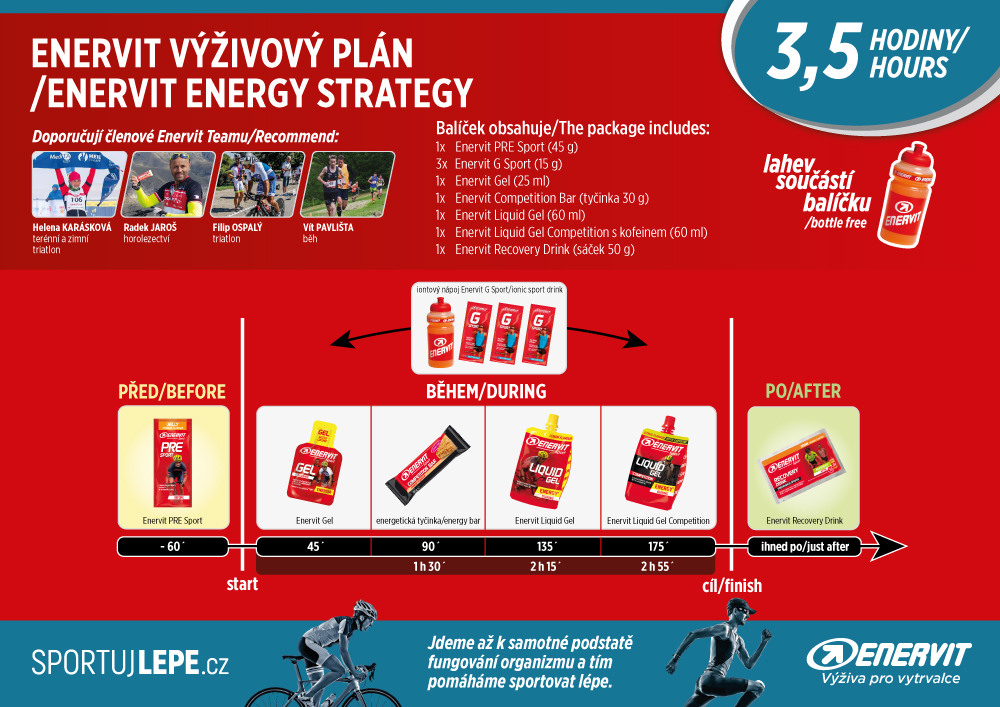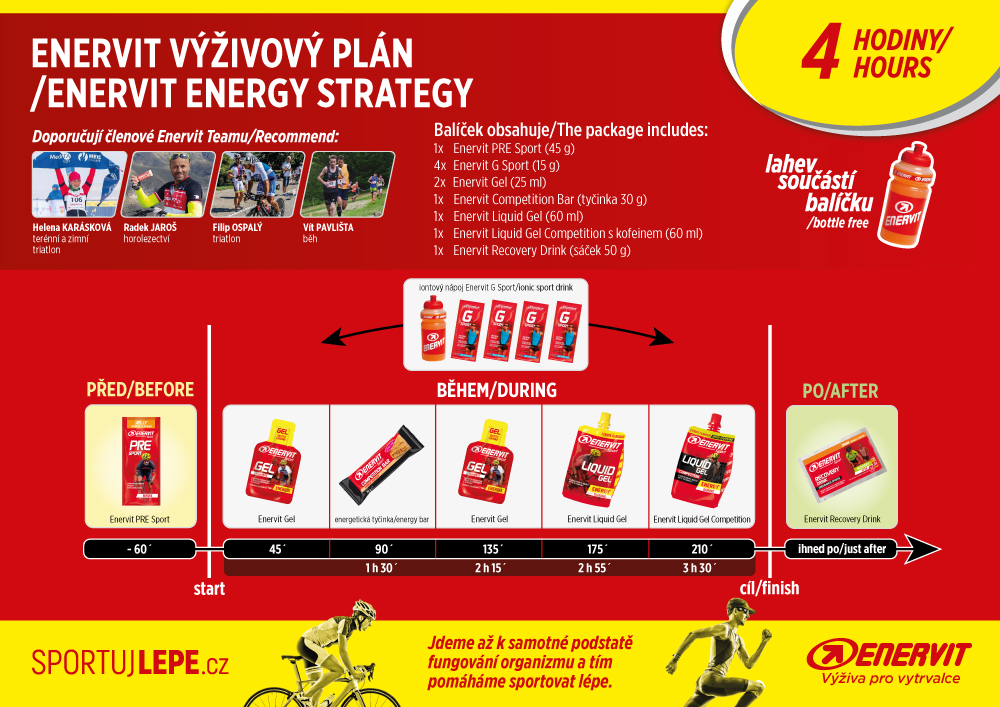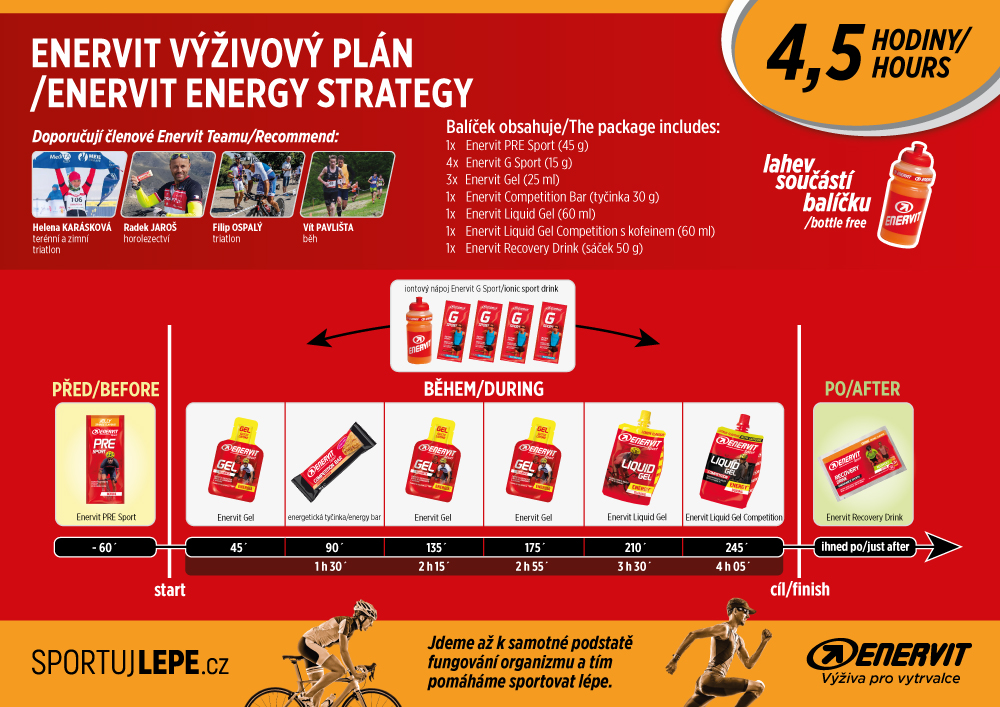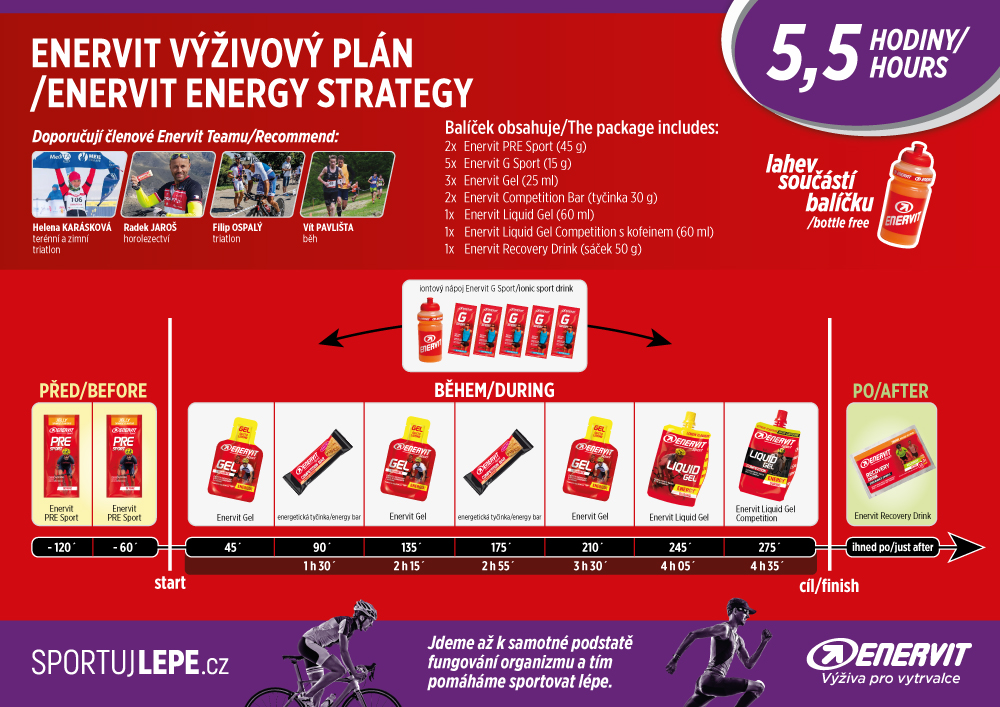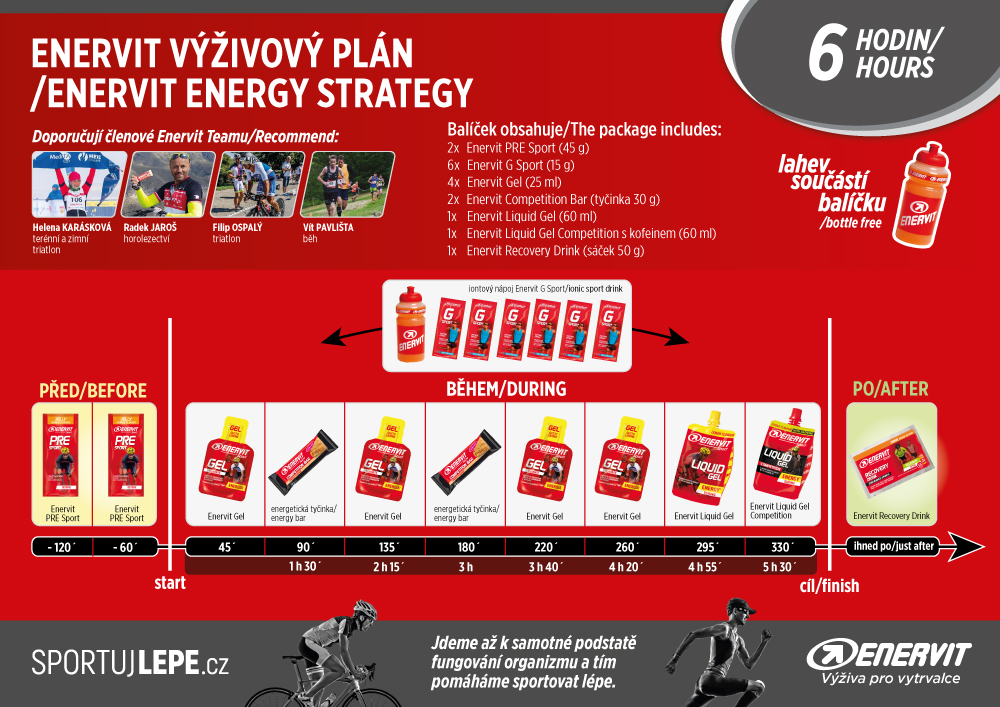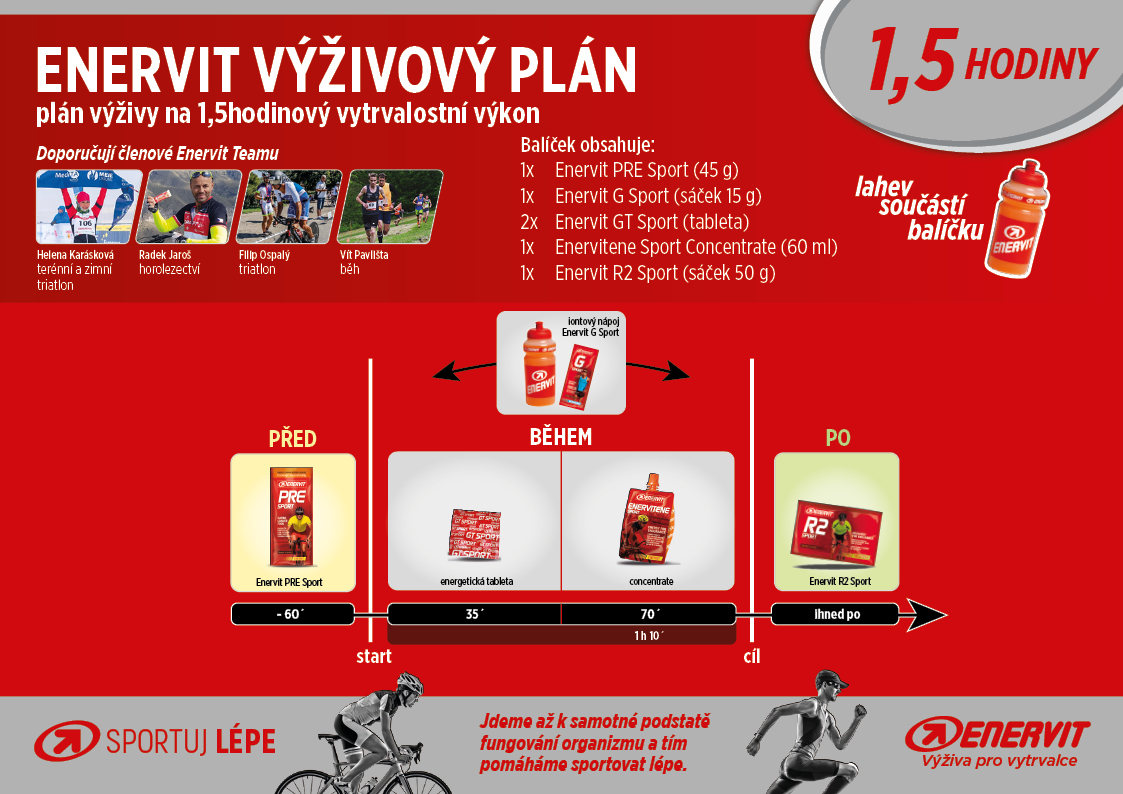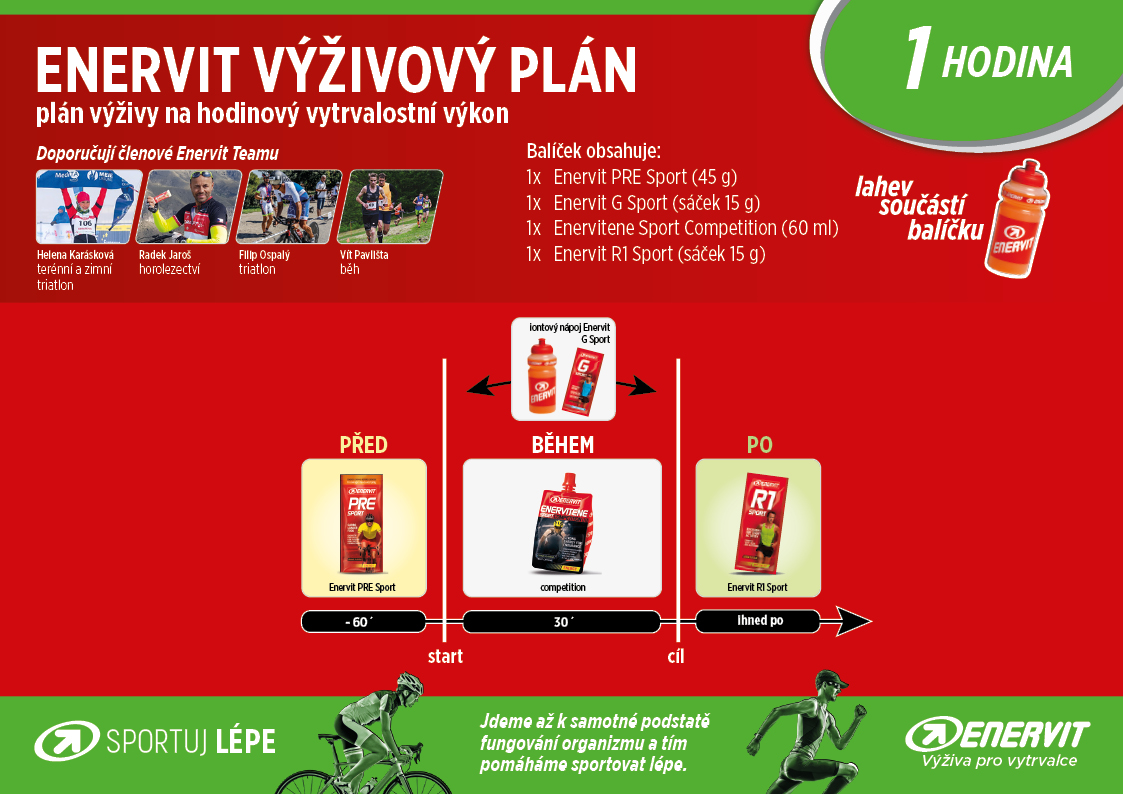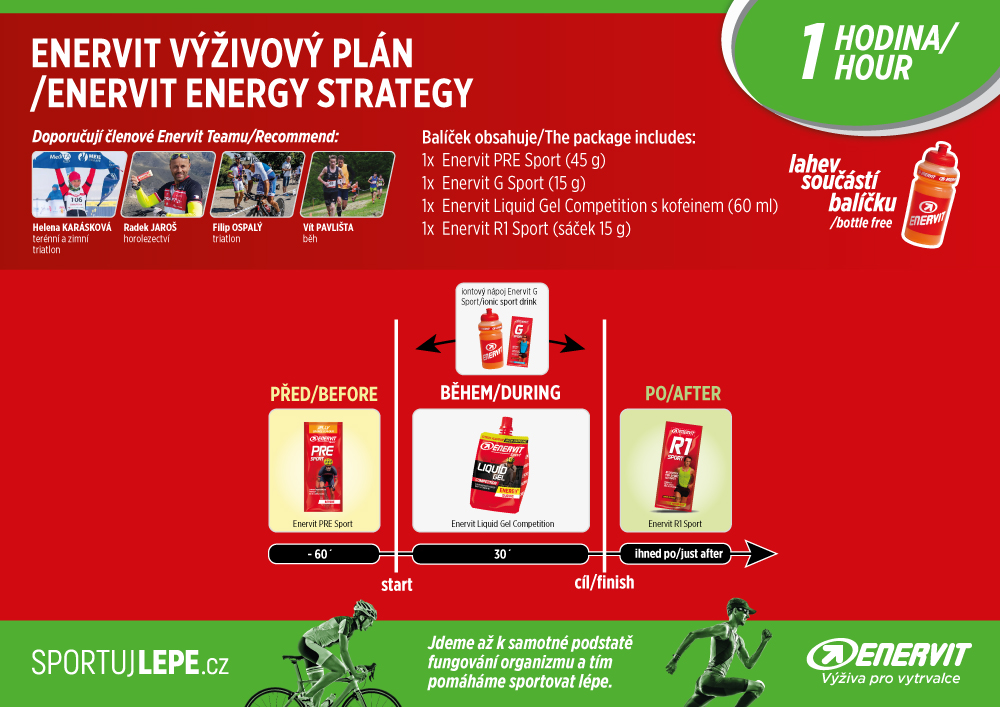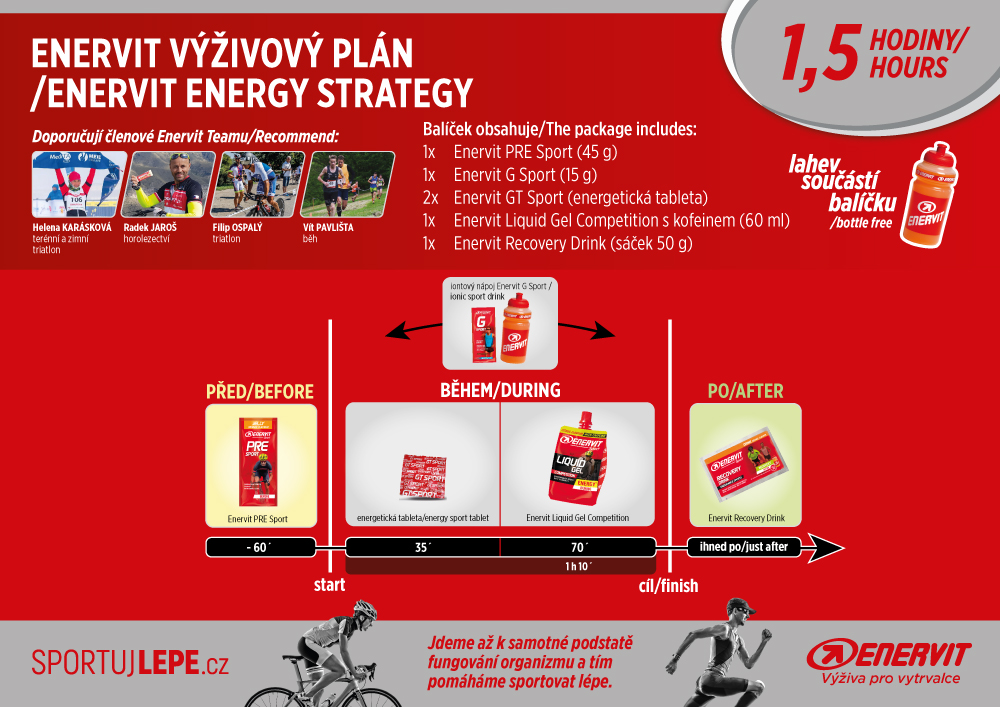Nutrition and aid stations
Enervit, a sports nutrition specialist for endurance, is the exclusive nutrition partner for Ford Challenge Prague 2019! By cooperating with Enervit, we offer you the opportunity to purchase convenient nutritional packs to keep you running full of energy during the Ford Challenge Prague. The packages are divided according to the expected duration of the performance.
ENERVIT NUTRITION PACKAGES
Packages can be easily purchased and paid through the registration system.
Your packages can be picked up at the Enervit booth at the Expo on Friday 26 July 2019 between 12:00 – 20:00 and then on Saturday 27 July 2019 from 7:00.
Possibility to order packages online is until 19. 7. 2019. Each product can also be purchased at the Expo at Enervit on Friday 26 July 2019 between 12:00 – 20:00 and then on Saturday 27 July 2019 from 7:00.
You can purchase packages on-site.
FORD CHALLENGEPRAGUE
Chose one of the 9 nutrition packages based on your expected finishing time of FORD CHALLENGEPRAGUE MIDDLE or RELAY.
SCOTT CHALLENGETRY-ATHLON
Chose one of the 2 nutrition packages based on your expected finishing time of Scott CHALLENGETRY-ATHLON!
NUTRITION TIPS
FUELING
The main fuel for an event like this is carbohydrate, especially if you are completing the race closer to the 4 hour mark than the 7 hour mark. Your body stores contain roughly 500 grams of carbohydrate (this is 2000 kcal), not enough to make it to the finish line. In theory it should be enough to get most athletes through the first 3 hours of a race but topping up from the start is essential. Because it takes time for carbohydrate to be absorbed, you need to start early with fueling to make sure you avoid carbohydrate depletion. Once you run out of carbohydrate stores it is difficult to recover.
As a general rule, aim for 60 grams of carbohydrate per hour (1,2). This carbohydrate can be in the form of a bar, a gel, chews, or a drink. If you use solid foods, make sure fat, protein and fiber content are low (no more than a few grams). What you use is entirely up to you and your personal preferences. Faster athletes tend to use more liquids and less solids because it can be difficult to chew at high intensities.
To give you some idea of what 60 grams per hour equates to, it means that for every hour of the race you would need one of the following combinations:
– 2 gels and a small amount of sports drink;
– 1 gel and a bottle of a sports drink;
– 1 energy bar and half a bottle of a sports drink.
For more accurate calculations check the food labels of the products you are going to use for exact amounts.
HYDRATION
“Drinking to thirst” is a recommendation that works fine for the slower athlete. If you are going a bit faster it is better to go in with a plan. It is good to use the early parts of a race when the gastrointestinal tract is working fine to absorb both carbohydrate and fluid. Later in the race, even though you may be thirsty, the gut may not absorb as much. Don’t drink excessively and use common sense. The goal should be to lose a little weight (2 to 4 pounds) at the finish line. You definitely want to avoid weight gain, which clearly would be a s sign of drinking too much. In hot environments dehydration can definitely be a very important factor. Don’t forget that good hydration starts before the race, and hydrate well in the days leading to your race.
COMMON MISTAKES ON RACE DAY
1 Sticking to a plan at all costs
If for some unforeseen reason you cannot follow the plan (you lost a bottle, or you are developing gastrointestinal problems), do not continue with the plan at all costs. Be flexible and adapt. A slightly lower intake is not going to be a problem, forcing more nutrition in will.
2 Do not try something new on race day
Sometimes you’ll see athletes walk around on expos, buying new products for the race the next day. Only use products that you have tried and tested, products you know you tolerate well.
3 Thinking that more is better
Drinking more and eating more is not always better. Sure, you have to take in enough energy and enough fluids, but once you achieve the basic needs, more is not necessarily better and in some cases detrimental.




